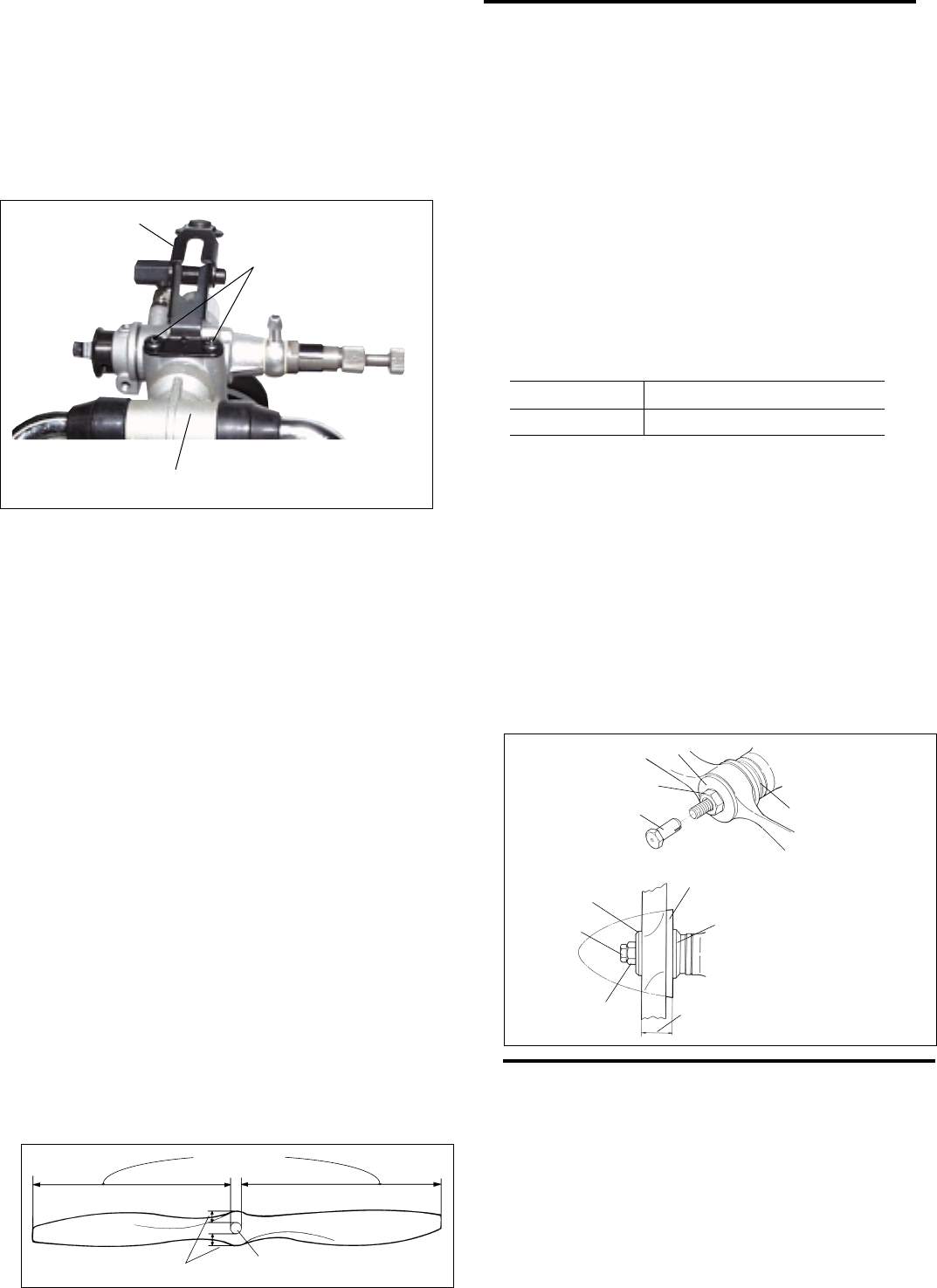
10
16x8, 18x6-8, 20x6
Carburetor
The needle-valve and throttle lever locations are
interchangeable by reversing the carburetor. This can be
done as follows:
Remove the carburetor carefully by unscrewing the two
screws which secure both carburetor and choke valve.
After reversing the carburetor, re-insert it into the intake
manifold, taking care not to damage the O-ring in the
manifold.
Photo. 4
Choke valve
Intake manifold
Carburetor retaining screw
PROPELLER
The choice of propeller depends on the design and weight of
the aircraft and on the type of flying in which you will be
engaged. Determine the best size and type after practical
experimentation. As a starting point, refer to the props listed in
the accompanying table. Slightly larger, or even slightly
smaller, props than those shown in the table may be used, but
remember that propeller noise will increase if blade tip velocity
is raised, due to higher rpm or if a larger-diameter / lower-pitch
prop is used.
Make sure that the propeller is well balanced. An
unbalanced propeller and / or spinner can cause serious
vibration which may weaken parts of the airframe or
affect the safety of the radio-control system.
DO NOT forget the WARNINGS and NOTES on propeller
and spinner safety given on pages 2,3 and 4.
Warning:
Type
Size
(
DxP
)
Sport/Scale
Make a habit of always checking the tightness of the
propeller before starting the engine. Remember that,
especially with wooden propellers, there is a tendency for
the material to shrink, or for it to be reduced by the
serrated face of the drive hub. Retighten the propeller nut
if necessary after loosening the Safety Propeller Locknut.
The licknut should be tightened firmly after retightening
the propeller nut.
NOTE:
11
Ream the propeller shaft hole to 12mm bore with an
appropriate reamer, checking that the hole is exactly
centered.
Install the prop to the engine shaft, followed by the retaining
washer and prop nut and tighten firmly with a 17mm
wrench. (not supplied).
1.
2.
3.
Add the special tapered and slotted locknut and secure
with a 12mm wrench while holding the prop nut with the
14mm wrench. (not supplied).
FUEL TANK
The suggested fuel tank size is 400cc or 14 oz. This will give
approximately 10 minutes running time at full power, or about
13-15 minutes when some part-throttle operation is included.
Fuel consumption also depends, of course, on the size of
propeller used.
The ideal fuel tank location is with the top of the tank 5-10mm
(1/4-3/8") above the needle valve. However, model design will
usually require the tank to be located higher than this and there
should be no trouble with such a tank location provided that
you do not pursue spectacular aerobatic flight.
If the tank is located high, fuel will flow into the carburetor when
the tank is full. Therefore, pinch the fuel line with a clip, when
the engine is not running, to prevent flooding and loss of fuel.
PROPELLER & SPINNER ATTACHMENT
There is a risk, particularly with powerful four-stroke engines,
of the propeller flying off if the prop nut loosens due to
detonation ("knocking") in the combustion chamber when the
engine is operated too lean, or under an excessively heavy
load.
Obviously, this can be very hazardous. To eliminate such
dangers, the O.S. Safety Locknut Assembly was devised.
Install this as follows:
To be equal
To be equal
Ream to 12mm dia.
Fig. 8
Propeller washer
Propeller washer
Propeller nut
Propeller nut
Locknut
Locknut
Drive hub
Drive hub
Back-plate of spinner
The Safety Propeller Locknut can
be used provided that the width is
between 21.5mm and 26mm.
Fig. 9


















